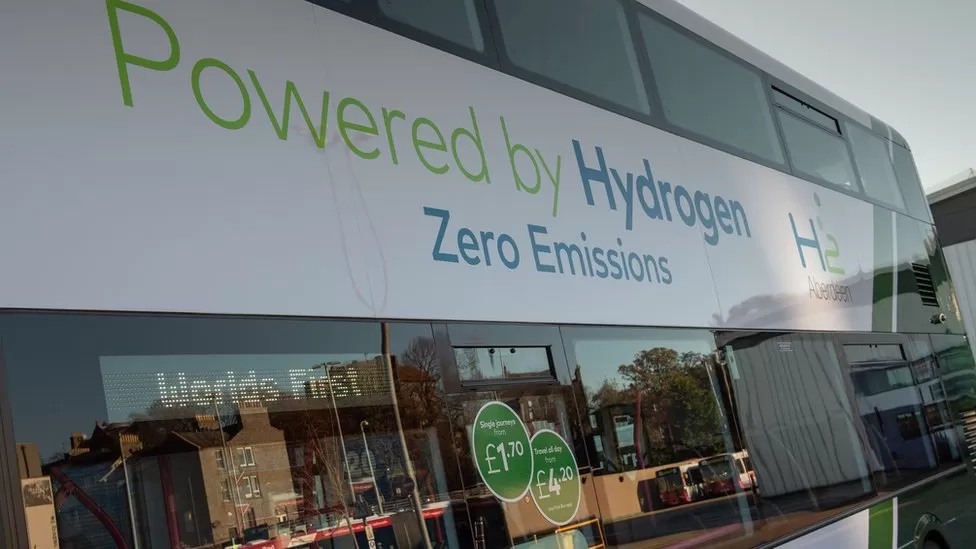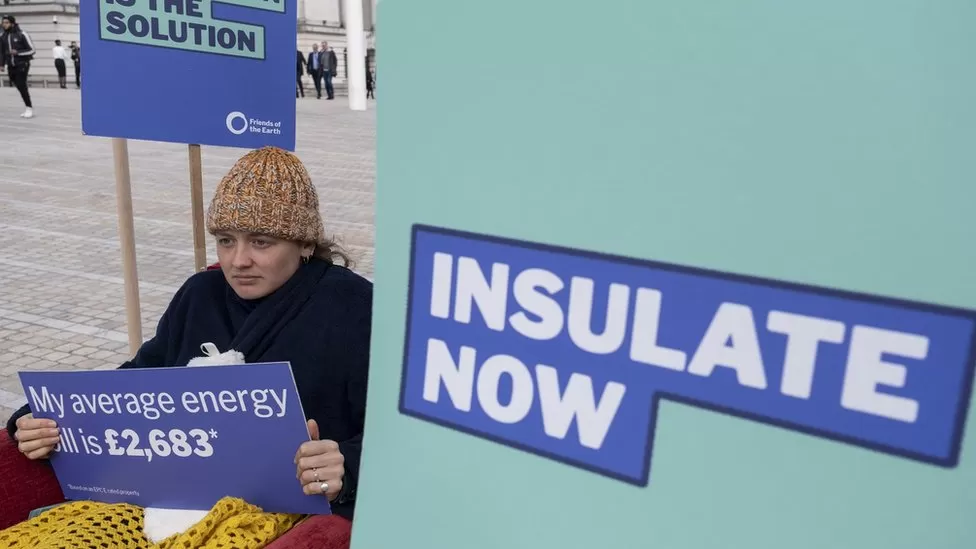A plan to cut greenhouse gasses and lower energy costs by investing in nuclear power, renewable energy and carbon capture technology is published by the government on Thursday. The plan includes measures to ensure emissions are net zero by 2050, mainly by cutting fossil fuel dependence. Ministers say they want the UK to have the cheapest electricity in Europe by 2050, but admit the strategy is unlikely to bring down bills next year. Labour said the plans were a “rehash”.
The strategy – called Powering Up Britain – is largely focused on increasing UK clean energy – wind, solar and nuclear – which it is hoped will drive down emissions but also reduce energy costs. Prime Minister Rishi Sunak said: “When global energy supplies are disrupted and weaponised by the likes of Putin, we have seen household bills soar. We are stepping up to ensure our energy security in the long term so we can drive down energy prices.”

There are dozens of measures in the plan, which runs to 1,000 pages, covering energy efficiency in domestic properties to large infrastructure projects. They include:
- Rebranding of ECO+ Scheme the Great British Insulation Scheme, to help insulate 300,000 of the poorest performing homes
- Confirmation of £240m funding for green hydrogen projects
- Confirmed launch of Great British Nuclear to support the growth of the nuclear industry
- More flexibility in planning for onshore wind and accelerated planning for offshore wind and solar
It also contains a detailed outline of how the UK will achieve its climate targets, after the High Court ruled last July that the original Net Zero plan was not detailed enough to show how the UK would reduce its emissions. But Labour and experts have said that most of these measures have already been announced.

Shadow climate secretary Ed Miliband said: “What was billed with huge hype as the government’s “green day” turns out to be a weak and feeble groundhog day of re-announcements, reheated policy, and no new investment.” Campaigners are frustrated that it appears there is no significant increase in funding for home insulation. It is one of the most effective ways to reduce wasteful heat loss, which increases bills and emissions. Last year the UK Committee on Climate Change (CCC) – the government’s independent advisers on climate change – said there was a “shocking gap” in policy for better insulated homes, and were expecting the government to respond to those concerns in this report.
Dr Paul Balcombe, senior lecturer in chemical engineering and renewable energy at Queen Mary University of London, said: “Investing in new low carbon energy infrastructure is great, but the most sustainable way to be low carbon and increase security is to reduce our energy demand: the stated intention of insulating 300,000 out of [more than] 20 million homes is clearly insufficient when we have such a poorly insulated housing stock.” Energy companies also said the strategy was a missed opportunity to address some of the issues with connecting new renewable energy to the power grid.

Lucy Yu, CEO of the Centre for Net Zero, a think tank owned by Octopus Energy, told the BBC: “Speeding up the planning process for new renewable energy developments is welcome, but it has to be accompanied by reforms that make it easier, faster and cheaper to get a grid connection.” Updated measures include a three-year extension to 2028 to a scheme offering households £5,000 to replace their gas boilers with heat pumps. A Lords enquiry recently described the heat pump scheme as “seriously failing”, after initial figures showed low take-up of the grant by households. But it is hoped that a new marketing campaign will help dispel some of the worries around their installation. Keeping energy bills low for consumers is a key ambition of this strategy. The government has said it recognises one of the main ways to bring down bills is by increasing renewable energy but also by “decoupling” electricity from gas prices.
At the moment the UK still needs natural gas to meet its demand, so its generators, which charge the highest prices, set the electricity cost. How the government achieves this is not yet clear – it said it would make no announcements at this time but were looking at different measures. It has proposed to move the existing “green levies” on electricity prices over to gas prices so as not to penalise households for using electricity, which is greener. More announcements are expected to be made on Thursday including a decision on where the UK’s first carbon capture and storage projects will be located. The carbon capture process stops most of the CO2 produced during the burning of fossil fuels like gas from being released, and either re-uses it or stores it underground. The UK government has committed to building a new gas fired power station with the CO2 captured and stored under the North Sea.
![]()





